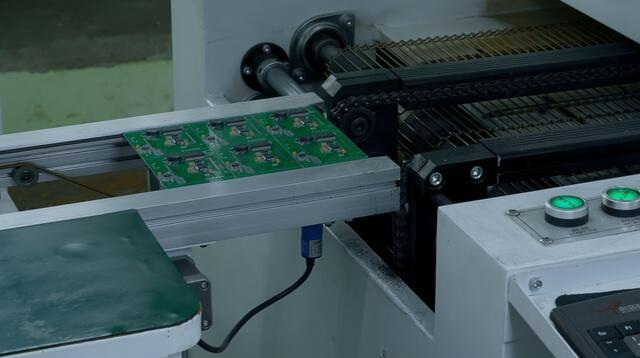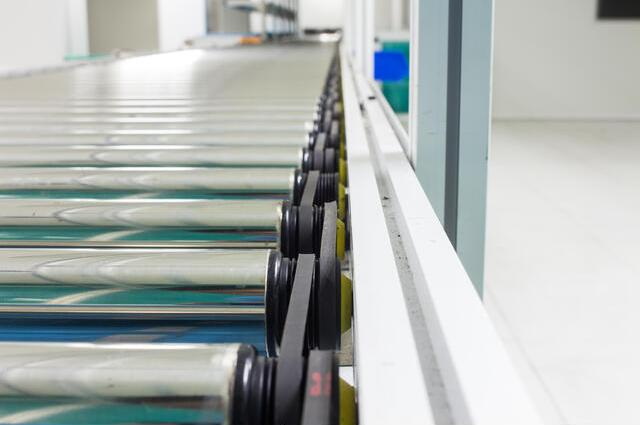Content Menu
● Introduction
● Key Strategies for Maximizing SMT Line Efficiency
>> 1. Balance Load Distribution
>> 2. Optimize Equipment and Processes
>> 3. Reduce Changeover Times
>> 4. Embrace Technological Innovations
>> 5. Implement Lean Manufacturing Principles
>> 6. Train and Educate Your Workforce
>> 7. Optimize Line Layout and Workflow
>> 8. Foster a Culture of Continuous Improvement
>> 9. Collaborate with Suppliers
>> 10. Maintenance and Upkeep
● Detailed Exploration of Key Strategies
>> Automation: The Foundation of Efficiency
>> Training: The Pillar of Quality
>> Lean Manufacturing: Minimize Waste
>> Continuous Monitoring: Ensuring Quality Control
>> Supplier Collaboration: Building Strong Relationships
● Conclusion
● FAQ
>> 1. What is the role of automation in SMT line efficiency?
>> 2. How can changeover times be minimized?
>> 3. Why is workforce training important for SMT lines?
>> 4. What are the benefits of lean manufacturing in SMT lines?
>> 5. How does real-time monitoring improve SMT line performance?
● Citations:
Introduction
In the competitive landscape of electronics manufacturing, Surface Mount Technology (SMT) lines are essential for producing high-quality printed circuit boards (PCBs). The efficiency of these lines directly impacts production costs, product quality, and delivery times. Therefore, maximizing efficiency in SMT lines is not just a goal but a necessity for manufacturers aiming to stay ahead. This article delves into various strategies and best practices that can significantly enhance the efficiency of your SMT line.

Key Strategies for Maximizing SMT Line Efficiency
1. Balance Load Distribution
Efficient load distribution across SMT machines is critical to prevent bottlenecks. By ensuring that each machine handles a balanced number of components, you can achieve uniform mounting times and minimize idle periods. This not only optimizes resource utilization but also extends the lifespan of the machines by preventing excessive wear on any single unit.
2. Optimize Equipment and Processes
- Automation: Implementing automation in key processes such as solder paste application, component placement, and reflow soldering can dramatically increase productivity while reducing errors. Automation enhances consistency, ensuring that each PCB meets stringent quality standards.
- Machine Placement Strategies: Employ strategies like group technology to minimize idle time. For example, arranging components in the order they will be placed on the PCB can streamline setup times and improve overall throughput.
- Continuous Monitoring: Utilize real-time data analytics to identify bottlenecks and make informed decisions for process improvement. Advanced monitoring tools can provide insights into machine performance, enabling proactive maintenance and adjustments.
3. Reduce Changeover Times
Minimizing changeover times between different production setups is vital for maintaining efficiency. Automated materials management systems and standardized operating procedures can streamline this process. Additionally, maintaining organized feeders and ensuring that components are readily available can further reduce transition times.
4. Embrace Technological Innovations
Investing in cutting-edge SMT equipment equipped with features such as predictive maintenance and machine learning algorithms can enhance precision while reducing downtime. These technologies allow manufacturers to anticipate potential issues before they disrupt production, thereby maintaining high operational efficiency.
5. Implement Lean Manufacturing Principles
Adopting lean manufacturing techniques—such as Just-In-Time (JIT) inventory systems and continuous improvement methodologies like Kaizen—helps minimize waste and fosters ongoing enhancements in production processes. Lean principles focus on optimizing workflows and ensuring effective resource utilization.
6. Train and Educate Your Workforce
A well-trained workforce is crucial for efficient SMT line operations. Regular training programs ensure that operators are proficient in equipment handling, troubleshooting, and maintenance. Investing in workforce development not only boosts productivity but also empowers employees to adapt to new technologies and processes.
7. Optimize Line Layout and Workflow
Designing an efficient line layout minimizes material handling and operator movement, which can significantly enhance productivity. Proper storage solutions for sensitive components, along with climate-controlled environments, further contribute to operational efficiency.
8. Foster a Culture of Continuous Improvement
Encouraging a culture of continuous improvement within your organization is essential for long-term success. Empower employees to identify inefficiencies and propose solutions regularly. This proactive approach can lead to significant enhancements in efficiency over time.
9. Collaborate with Suppliers
Building strong relationships with suppliers ensures a reliable supply of high-quality materials. Collaborate with suppliers to align on delivery schedules, quality standards, and cost-saving opportunities, which ultimately contributes to the overall efficiency of your SMT line.
10. Maintenance and Upkeep
Regular maintenance of equipment is critical to preventing unexpected breakdowns that can disrupt production flow. Implementing a preventive maintenance schedule helps keep machines in optimal condition while predictive maintenance tools can identify potential issues before they escalate into costly repairs.

Detailed Exploration of Key Strategies
Automation: The Foundation of Efficiency
Automation has become a cornerstone in modern SMT manufacturing due to its ability to enhance both speed and accuracy. By automating repetitive tasks such as solder paste application using screen printers or component placement via pick-and-place machines, manufacturers can significantly reduce labor costs while increasing output rates.
For instance, integrating Automated Optical Inspection (AOI) systems allows for real-time quality checks during the production process, identifying defects early on and reducing the need for costly rework later in the assembly line.
Training: The Pillar of Quality
Continuous training programs are essential for keeping staff updated on the latest technologies and methodologies in SMT production. A knowledgeable workforce is better equipped to handle machinery efficiently, troubleshoot issues quickly, and maintain high standards of quality throughout the production process.
Regular workshops focusing on new equipment features or updated best practices can empower employees to be proactive rather than reactive when it comes to operational challenges.
Lean Manufacturing: Minimize Waste
Lean manufacturing principles focus on maximizing value while minimizing waste across all areas of production. Techniques such as Value Stream Mapping (VSM) help identify non-value-added activities within the SMT process, enabling manufacturers to streamline operations effectively.
Implementing Just-In-Time (JIT) inventory systems reduces excess stock holding costs while ensuring that materials arrive precisely when needed for production runs—thereby minimizing waste associated with overproduction or obsolescence.
Continuous Monitoring: Ensuring Quality Control
Real-time monitoring systems provide invaluable data regarding machine performance metrics such as uptime/downtime ratios or cycle times per PCB produced. By analyzing this data regularly through dashboards or reporting tools, manufacturers can pinpoint areas requiring immediate attention or improvement initiatives.
For example, if a particular machine consistently shows longer cycle times than expected during specific production runs, it may indicate a need for recalibration or even replacement if it's nearing end-of-life status.
Supplier Collaboration: Building Strong Relationships
Strong supplier relationships are vital for ensuring timely delivery of quality materials necessary for efficient SMT operations. Manufacturers should engage suppliers in discussions about lead times, quality expectations, and potential cost-saving measures through bulk purchasing agreements or long-term contracts.
By fostering transparency within these partnerships—such as sharing forecasts regarding upcoming production needs—both parties can work together more effectively toward achieving shared goals related to efficiency improvements.
Conclusion
Maximizing efficiency in your SMT line requires a comprehensive approach that integrates advanced technology, streamlined processes, and a skilled workforce. By implementing the strategies outlined in this article—ranging from balancing load distribution to embracing technological innovations—manufacturers can achieve higher productivity levels, reduced costs, and improved product quality. These enhancements not only bolster competitiveness but also ensure timely delivery of reliable products to customers.

FAQ
1. What is the role of automation in SMT line efficiency?
Automation plays a crucial role by reducing manual errors, speeding up production processes, and enhancing flexibility within SMT lines.
2. How can changeover times be minimized?
Changeover times can be minimized through automated materials management systems and standardized procedures alongside maintaining organized feeders for quick access to components.
3. Why is workforce training important for SMT lines?
Workforce training is vital as it ensures operators are skilled in equipment operation and troubleshooting, leading to smoother operations and higher efficiency levels.
4. What are the benefits of lean manufacturing in SMT lines?
Lean manufacturing minimizes waste while optimizing workflows, resulting in cost savings as well as improved efficiency through continuous improvement practices.
5. How does real-time monitoring improve SMT line performance?
Real-time monitoring enables manufacturers to identify bottlenecks quickly, track performance metrics accurately, and make data-driven decisions for process optimization.
Citations:
[1] https://www.adoptsmt.com/en/efficiency-enhancement-in-smt-manufacturing/
[2] https://txjpcb.com/the-best-practices-for-smt-line-balancing-and-optimization/
[3] https://www.neodensmt.com/news/improve-smt-production-efficiency-48868013.html
[4] https://www.smtfactory.com/Optimizing-Efficiency-Strategies-for-A-Smooth-SMT-Line-Production-Process-id47463586.html
[5] https://core-emt.com/blog/smt-news-1/identifying-addressing-smt-line-bottlenecks-to-plan-line-upgrades-smartly-119
[6] https://rushpcb.com/line-efficiency-of-a-pcb-manufacturer/
[7] https://www.smtfactory.com/Perfecting-Your-SMT-Line-Layout-for-Efficiency-id47017676.html
[8] https://www.smtfactory.com/Unveiling-the-Secrets-of-SMT-Line-Process-Optimization-id45117676.html
[9] https://www.raypcb.com/line-efficiency/
[10] https://quality-line.com/smt-quality/
[11] https://www.linkedin.com/pulse/how-improve-smt-production-efficiency-
[12] https://www.smthelp.com/methods-and-measures-to-improve-the-production-efficiency-of-smt-production-line
[13] https://blogs.sw.siemens.com/valor-dfm-solutions/how-to-optimize-pcb-design-for-the-smt-assembly-process-flow/
[14] https://www.gssmt-parts.com/how-to-optimize-your-smt-line-setup-for-high-speed-production.html




















